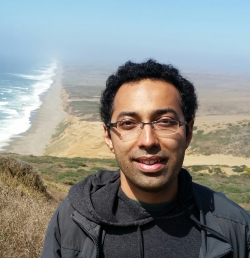
102 Cardwell Hall
Since the discovery of mode-locking to generate femtosecond laser pulses, which in turn led to the development of high-harmonic generation that can create attosecond pulses in the extreme-ultraviolet (XUV) regime, our understanding of ultrafast dynamics in atoms and molecules has come a long way. However, in spite of significant advances in both laser sources and spectroscopy methods such as time-resolved photo-electron/ion spectroscopy and transient absorption spectroscopy, studying ultrafast dynamics even in simple molecules is extremely challenging. New techniques that can sensitively probe dynamics in molecules can make a huge difference in ultrafast AMO science by providing complementary information that can help towards building a complete picture of time-dependent processes in these systems. Our new approach of Ultrafast Transient Polarization Spectroscopy (UTPS) based on the well-known Optical-Kerr Effect spectroscopy has the potential to be one of the most sensitive methods to study ultrafast dynamics, especially on excited electronic states. In this talk, I will first provide an overview of our experiments to study ultrafast dynamics in molecular systems with intense vacuum ultraviolet and extreme ultraviolet pulses generated from a terawatt laser system. I will then discuss our ongoing work using UTPS to study ultrafast dynamics on electronically excited states of liquid Nitrobenzene with one ultra-violet and two weak near infra-red femtosecond pulses. Our goal is to follow excited state dynamics on the femtosecond time-scale using a polarization probe as a more sensitive and versatile alternative to transient absorption methods. I will present recent results and discuss the extension of these methods to the attosecond XUV and soft x-ray regime.